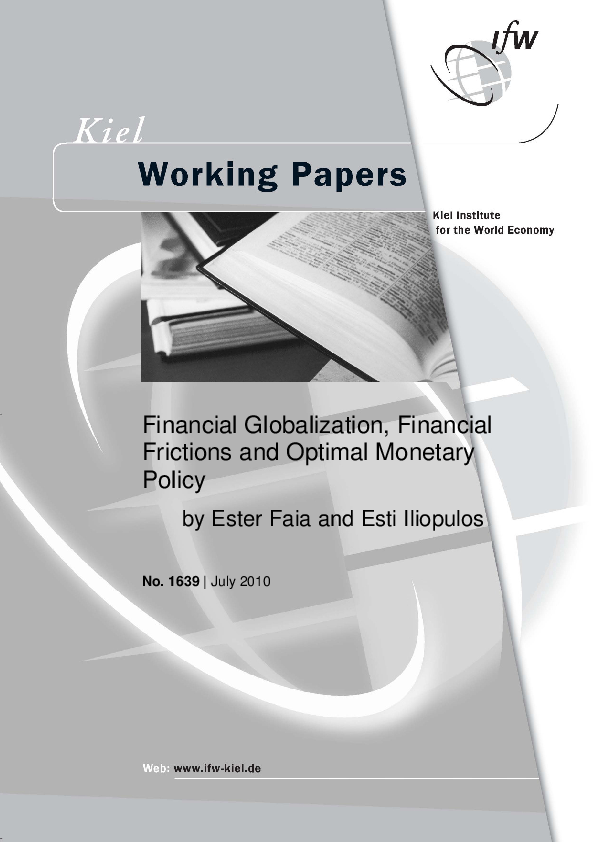Arbeitspapier
Financial Globalization, Financial Frictions and Optimal Monetary Policy
Autoren
Erscheinungsdatum
JEL Classification
How should monetary policy be optimally designed in an environment with high degrees of
financial globalization? To answer this question we lay down an open economy model where
net lending toward the rest of the world is constrained by a collateral constraint motivated by limited enforcement. Borrowing is secured by collateral in the form of durable goods whose
accumulation is subject to adjustment costs. We demonstrate that, although this economy
can generate persistent current account deficits, it can also deliver a stationary equilibrium. The comparison between different monetary policy regimes (floating versus pegged) shows that the impossible trinity is reversed: a higher degree of financial globalization, by inducing more persistent and volatile current account deficits, calls for exchange rate stabilization. Finally, we study the design of optimal (Ramsey) monetary policy. In this environment the policy maker faces the additional goal of stabilizing exchange rate movements, which exacerbate fluctuations in the wedges induced by the collateral constraint. In this context optimality requires deviations from price stability and calls for exchange rate stabilization.






